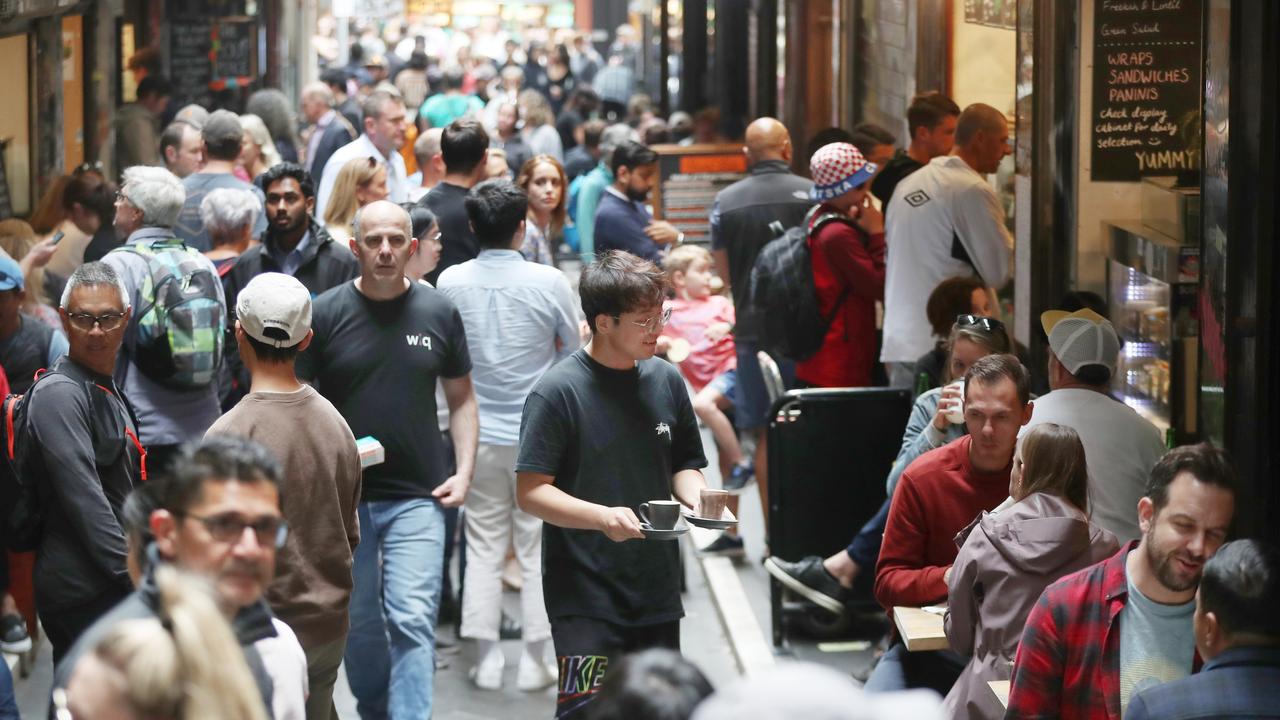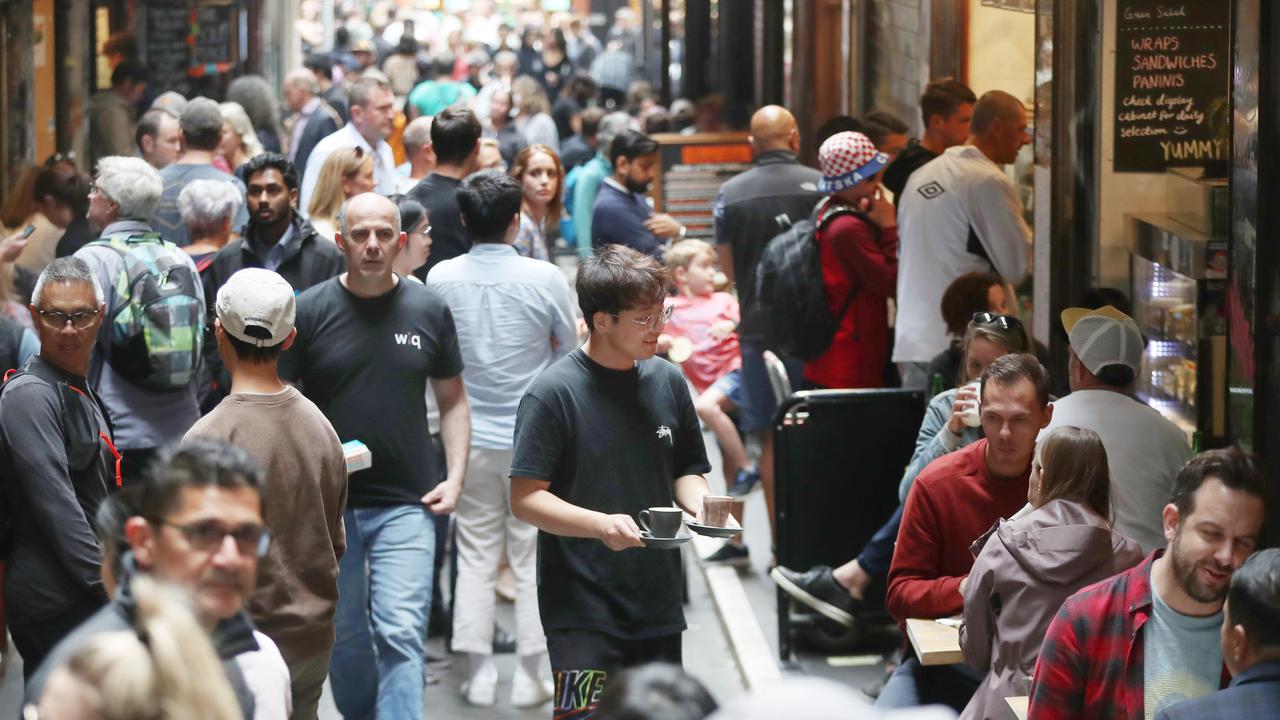Creditor forecasts highest level of business failures since Covid
Aussie businesses have been hit with a grim forecast for the year unless consumers change their spending habits.

Businesses are closing down at the fastest rate since the height of the covid pandemic as higher interest rates, cost of living pressures and Aussies pocketing stage three tax cuts add to mounting pressures on businesses.
Fresh figures released by CreditorWatch show the average failure rate for Australian businesses sits at 5.04 per cent, having climbed from 3.97 per cent in October. The previous high was 5.08 per cent in October 2020 during the covid lockdowns.

CreditorWatch chief economist Ivan Colhoun said the failure rate fell steadily after the initial phase of the pandemic but reversed trend in October 2023.
Mr Colhoun said businesses were experiencing many of the same cost pressures as consumers such as higher electricity, insurance and rental costs, as well as the impacts of minimum wage increases.
“Together with some greater caution in discretionary spending and softness in interest rate sensitive sectors of the economy, this unsurprisingly has led to higher voluntary business closures and some rise in insolvencies,” he said.
At the same time, legacy policies from the covid pandemic, including deferred tax payments, are now coming due, with the ATO attempting to recover $35bn in outstanding debt owed by small businesses.
While the rate of failure has reached a four year high now, some of these businesses would have failed earlier if it wasn’t for the deferred payment system.
The report also shows the food and beverage sector recorded the highest failure rate of all industries in October, increasing to 8.5 per cent on a rolling 12-month basis from 8.3 per cent in the 12 months to September.

Things in the consumer facing sector are only tipped to get worse, with forecasts of a 9.1 per cent failure rate.
The forecast is in line with the ABS Household Spending Indicator for September which showed the number of visits to and sales in hotels, cafes and restaurants was 1.7 per cent lower than a year ago.
Sales in the tobacco and alcohol sector were even weaker in volume terms at -16.6 per cent year-on-year.
Mr Colhoun said businesses were yet to see the full extent of stage 3 tax cuts introduced on July 1, which he said could ease some pressures from businesses.
Dubbed as a tax cut for all, under the revamped system, the 19 per cent rate of tax was reduced to 16 per cent, the 32.5 per cent rate was reduced to 30 per cent and the 37 and 45 per cent tax thresholds were increased.
According to analysis by Westpac during late October economy-wide, the bank estimate the increase in disposable income from stage 3 tax cuts over the three months to September to be $6.4bn.
This is around three times the size of a 25 basis point rate cut.
Westpac economist Jameson Coombs said households weren’t spending the stage three tax cuts at this stage, with around 16 per cent going into consumption.
“If households are not spending the boost to their incomes, what are they doing with it? It’s probably no coincidence the September quarter saw the largest quarterly net inflow into savings and offset accounts since the September quarter of 2021,” Mr Coombs said.
According to CreditorWatch administrative and support services ranked second 6.0 per cent for the failure rate in October, followed by arts and recreation services 5.9 per cent and transport, postal and warehousing 5.8 per cent.

Meanwhile the level of failures for the construction sector, which has been hammered by higher input costs looks to be levelling out at 5.3 per cent.
CreditorWatch chief executive Patrick Coghlan said while inflation increases appear to have peaked, businesses are eagerly awaiting interest rate relief.
The official cash rate has sat at 4.35 per cent since November last year.
“A slowdown in the inflation rate will certainly help businesses but we must remember this just means that price rises have slowed down, so the cost pressures remain. In most cases, you won’t see the cost of goods and services coming down,” he said.
“Businesses desperately need interest rates to come down so households have some relief in cost-of-living pressures and start spending more.”





